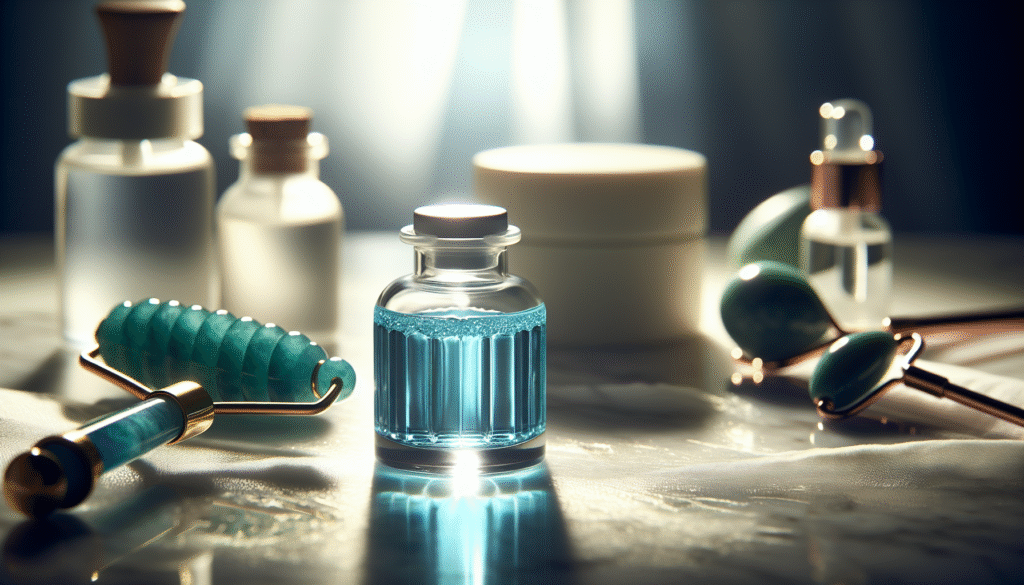
Have you ever considered how the correct concentration of methylene blue could enhance your skincare routine? This powerful compound is garnering attention in the beauty and wellness industries. Understanding its application and the ideal concentration for your skin type can make a significant difference in your skincare efficacy.
Understanding Methylene Blue
Methylene blue, a synthetic compound, has found its place in various domains, from medical applications to skincare. Originating as a dye, this compound possesses significant antioxidant properties, which have intrigued researchers and skincare enthusiasts alike. While it has traditionally been used in the medical field for treating conditions like methemoglobinemia, its potential benefits for skin health provide a compelling reason to explore its application further.
The Chemical Composition and Properties
Methylene blue (MB) is a heterocyclic aromatic compound with a molecular formula of C16H18ClN3S. Characterized by its distinctive blue color, this compound operates as a redox agent and possesses antiseptic properties that contribute positively to skin health. Its ability to penetrate biological membranes facilitates its actions, making it worthwhile to further examine how this compound can be integrated into your skincare routine.
The Rise of Methylene Blue in Skincare
Interest in methylene blue as a skincare ingredient has surged due to its multifunctional benefits. Research highlights its potential in improving skin texture, reducing signs of aging, and acting as an antimicrobial agent. In an era of natural and innovative skincare solutions, you may find that incorporating methylene blue in a controlled manner could elevate your routine.
Why Concentration Matters
The concentration of any active ingredient in skincare is crucial, as it determines efficacy and safety. Methylene blue concentrations can vary significantly, and understanding how these concentrations affect your skin is vital.
Safety Concerns with Higher Concentrations
Using higher concentrations may provide more immediate results, but the risk of skin irritation increases. Every skin type is unique; thus, one person’s ideal concentration may not suit another. You are encouraged to exercise caution and conduct thorough research or consult with a skincare professional.
Recommended Concentrations
When deciding on methylene blue for skincare, concentrations up to 0.5% are typically deemed safe for topical use. Concentrations at this level can provide benefits such as skin hydration and antioxidant effects without overwhelming the skin.
| Concentration | Effects | Suitable For |
|---|---|---|
| 0.5% | Hydration, mild exfoliation | Sensitive skin |
| 1% | Targeted treatment | Oily, acne-prone skin |
| 2% | Enhanced efficacy | Normal to combination skin |
The table above illustrates the ideal concentrations and suggests which skin types may benefit most from each level.

Identifying Your Skin Type
Before integrating methylene blue into your regimen, identifying your skin type is essential. This knowledge will guide you in choosing the right concentration effectively.
Oily Skin
If your skin tends to be shiny and prone to breakouts, you might be dealing with oily skin. A concentration of 1% could prove beneficial, targeting excess oil and reducing the likelihood of acne.
Dry or Sensitive Skin
For dry or sensitive skin, lower concentrations, such as 0.5%, are advisable. These levels hydrate the skin without causing irritation or adverse reactions.
Combination Skin
Combination skin varies with oily areas, typically around the T-zone, and drier patches. A 1% concentration can offer balanced results across different skin areas.
Normal Skin
Normal skin generally exhibits a balanced oil and moisture level. Given its resilience, using concentrations of 1% or even venturing to 2% can enhance skin texture and vitality.
Conducting a Patch Test
Before incorporating methylene blue into your skincare routine, performing a patch test is paramount. This step allows for the assessment of possible allergic reactions or sensitivities.
Step-by-Step Guide for a Patch Test
- Select a Small Area: A discreet part of your skin, such as behind the ear or on your forearm, is ideal for the test.
- Apply a Small Amount: Use a cotton swab to apply a dime-sized amount of the product with methylene blue.
- Wait 24 Hours: Observe the area for any signs of redness, itching, or irritation.
- Evaluate: If no adverse reaction occurs, it’s likely safe to proceed with your chosen concentration.

Incorporating Methylene Blue into Your Routine
After determining your skin type and suitable concentration, incorporating methylene blue can become a seamless part of your regimen.
Step-by-Step Application
- Cleanse: Begin with a gentle cleanser to remove impurities from your skin surface.
- Tone: Apply a toner to balance your skin’s pH levels and prepare it for treatment.
- Apply Methylene Blue: Use your chosen methylene blue product, applying a thin layer across your skin.
- Moisturize: Follow up with a moisturizer to lock in hydration and enhance the treatment’s effects.
Frequency of Use
Although the frequency of use may vary depending on concentration and individual skin response, it is generally advisable to start with once or twice a week. You can gradually increase frequency as your skin adapts.
Potential Benefits of Methylene Blue for Skin
Understanding the benefits of methylene blue can further motivate its integration into your skincare routine.
Antioxidant Properties
Methylene blue is recognized for its powerful antioxidant effects. Antioxidants combat free radicals, a leading cause of premature aging, thus helping you maintain youthful skin.
Anti-Inflammatory Effects
This compound also demonstrates anti-inflammatory properties. It can aid in reducing redness and irritation associated with various skin conditions, providing comfort for sensitive skin types.
Antimicrobial Action
Methylene blue possesses antimicrobial properties that can help reduce acne-causing bacteria on the skin. By addressing these bacteria, you can contribute to clearer, healthier skin.
Possible Side Effects
While methylene blue offers numerous benefits, there are potential side effects to consider. Being aware of these will help you make informed decisions regarding your skincare.
Common Reactions
- Irritation: Some individuals may experience skin irritation, especially at higher concentrations.
- Staining: Methylene blue has a strong color; staining may occur, although it is generally temporary.
- Allergic Reactions: Although rare, allergic reactions can transpire. If you experience severe itching or swelling, discontinue use and consult a healthcare professional.
When to Consult a Professional
If you are uncertain about incorporating methylene blue into your routine or experience any side effects, seeking advice from a dermatologist or an experienced skincare professional is recommended. They can provide personalized recommendations based on your unique skin profile.
Alternatives to Methylene Blue in Skincare
If you find that methylene blue does not suit your needs or you are seeking additional options, there are various alternatives with similar benefits.
Other Antioxidants
Consider integrating other effective antioxidants such as vitamin C, vitamin E, and CoQ10 into your routine. These alternatives can provide substantial skin benefits while being generally well-tolerated.
Natural Remedies
Utilizing natural ingredients such as green tea extract, resveratrol, or turmeric may also offer skin benefits through their antioxidant and anti-inflammatory properties. They can be gentler alternatives for sensitive skin.
Conclusion
Choosing the right concentration of methylene blue for your skin is not just about adhering to current trends; it is about making informed decisions that can positively affect your skin health. Taking the time to consider your skin type, conducting patch tests, and understanding concentrations are crucial.
Integrating methylene blue into your routine may lead to enhanced skin vitality and health. As with any skincare product, patience and consistency will play vital roles in achieving desired results. With informed choices and proper application, you can unlock the potential of this remarkable compound in your skincare arsenal.